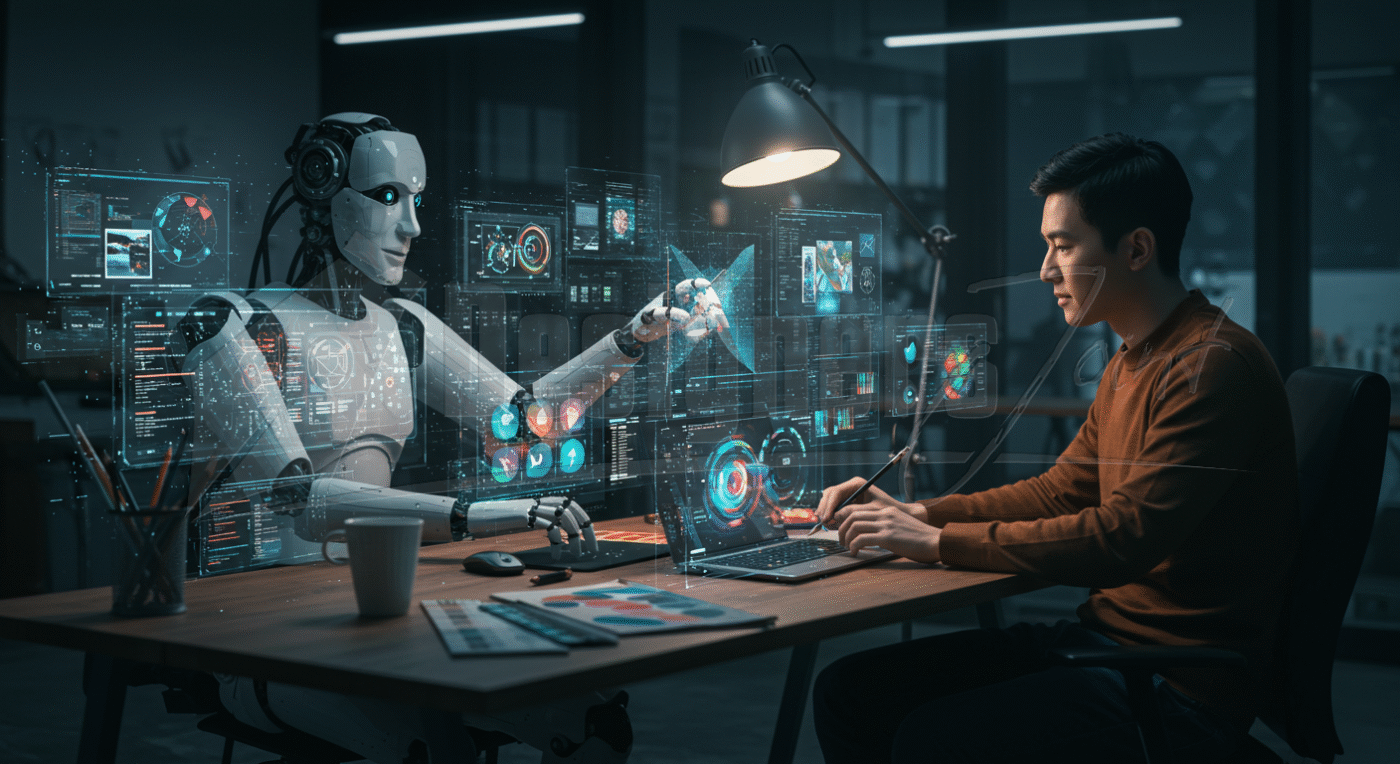Design Guide
How AI is Transforming Template Design
How Artificial Intelligence is Changing Graphic Design
How AI is Transforming Template Design: In today’s digital-first world, artificial intelligence (AI) is no longer just a futuristic idea—it’s actively transforming how we create, share, and experience design. One of the most profound changes is happening at the intersection of AI and design templates, reshaping the graphic design industry for professionals, small businesses, and everyday users alike.
This article explores how AI-powered templates are changing the game, their advantages, limitations, and what this means for the future of graphic design worldwide.
The Rise of AI in Design
Just a decade ago, design was seen as a manual, skill-driven process that only professional graphic designers could master. Today, thanks to AI, the barriers to entry have dropped dramatically. Tools like Canva, Adobe Express, Figma plugins, and AI-powered template marketplaces allow anyone—from startups to students—to create professional visuals in minutes.
AI doesn’t just speed things up; it learns from user behavior, predicts needs, and personalizes designs automatically. That means templates are no longer static—they adapt to the user’s industry, brand style, and even audience engagement trends.
How AI Is Transforming Templates
AI isn’t replacing templates; it’s redefining them. Here are key ways AI-driven templates are shaping design:
Smart Customization
Instead of manually tweaking layouts, AI suggests color palettes, typography, and layouts based on your brand assets. A small business uploading its logo can instantly see it applied across multiple designs—from flyers to social posts.Content-Aware Design
AI-powered templates can adapt to the type of content you input. For instance, if you write a product description, AI adjusts text blocks and imagery to highlight key selling points.Automated Brand Consistency
Maintaining a consistent brand identity across hundreds of touchpoints is tough. AI-driven templates automatically enforce brand rules—ensuring every design stays on-brand.Data-Driven Creativity
AI analyzes market trends, engagement rates, and industry insights to generate templates that are not just visually appealing but strategically effective.
Benefits of AI-Driven Templates
- Accessibility: Anyone, regardless of design skill, can produce high-quality content.
- Speed: Projects that once took hours can now be completed in minutes.
- Affordability: Small businesses and startups gain access to professional design without hiring expensive agencies.
- Scalability: Large corporations can maintain brand consistency across global markets efficiently.
The Human Touch: Why Designers Still Matter
A common concern is: Will AI replace graphic designers? The answer is no—but it will change their roles.
AI handles repetitive and time-consuming tasks, freeing designers to focus on strategy, storytelling, and creativity. While templates offer a starting point, human designers add nuance, originality, and cultural awareness that AI alone can’t replicate.
In fact, designers who embrace AI gain an advantage, using intelligent templates as tools to work faster and think bigger.
Global Impact: Democratizing Design
AI-driven templates are leveling the playing field. A small café in Nairobi, a tech startup in Berlin, and a nonprofit in São Paulo now have access to the same powerful design tools as multinational corporations. This democratization of design ensures that professional-quality branding and communication are no longer limited to big budgets.
By reducing cost and time barriers, AI templates are empowering creativity on a global scale.
Looking Ahead: The Future of AI in Templates
The future of design will likely be a hybrid world where AI and humans collaborate. Expect to see:
- Hyper-personalized templates that adapt to real-time audience engagement.
- Voice and gesture-powered design creation, making design even more intuitive.
- Cross-platform integration, where a single AI-driven template automatically adapts to web, print, social, and video formats.
One thing is clear: the designers, businesses, and creators who embrace AI-powered templates today will be the leaders of tomorrow’s design ecosystem.
Frequently Asked Questions (FAQ)
Q1: Can AI really replace graphic designers?
AI cannot replace human designers entirely. While AI templates automate repetitive tasks and generate quick designs, human creativity, cultural awareness, and storytelling remain irreplaceable.
Q2: What makes AI-driven templates different from regular templates?
Unlike traditional templates, AI-powered ones adapt to your brand automatically. They suggest layouts, colors, and fonts, ensuring brand consistency while saving time.
Q3: Are AI design templates suitable for small businesses?
Yes. AI templates make professional-quality design accessible to small businesses and startups at a fraction of the cost of hiring a full-time designer.
Q4: How does AI ensure brand consistency in design?
AI uses machine learning to recognize your logo, fonts, and colors. It then applies these brand elements consistently across multiple templates for different platforms.
Q5: What is the future of AI in graphic design?
The future will likely see hyper-personalized templates, cross-platform adaptability, and more intuitive design creation powered by AI voice and gestures. Designers will collaborate with AI rather than compete with it.
Final Thoughts
AI and templates aren’t here to kill creativity—they’re here to unlock it. By blending speed, intelligence, and accessibility, AI-driven templates are redefining graphic design for a global audience.
The question is no longer whether AI will change design, but how fast you’ll adapt to its power. For designers, businesses, and creators worldwide, the future of design has already arrived.

